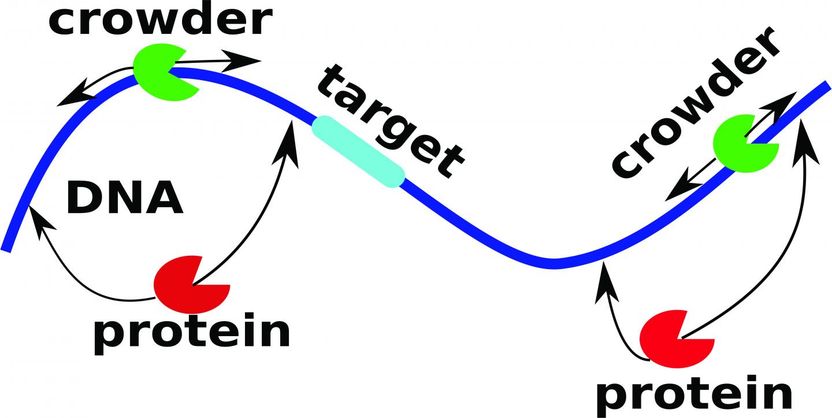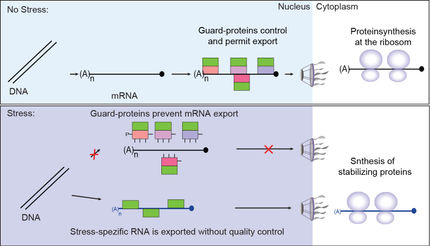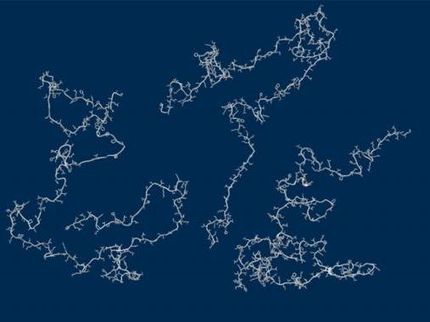Proteins put up with the roar of the crowd
Proteins that activate DNA binding sites appear to have no problems with crowded conditions
It gets mighty crowded around your DNA, but don't worry: According to Rice University researchers, your proteins are nimble enough to find what they need.

Rice University scientists modeling the interactions of binding proteins and DNA found it's unlikely that crowded conditions within the cell will keep the protein from doing its job. Their simulations showed crowding agents on the surface of DNA are usually moving fast enough to stay out of the way.
Alexey Shvets/Rice University
Rice theoretical scientists studying the mechanisms of protein-DNA interactions in live cells showed that crowding in cells doesn't hamper protein binding as much as they thought it did.
Through analytical theory and sophisticated computer simulations, they came to believe that the many molecules dispersed on or around DNA generally move quickly enough to give transcription factors and other proteins easy access to target genes.
These targets are starting points for all biological processes. They contain the information necessary to make more proteins, the workhorses that catalyze activities throughout the body. "Think of DNA as a big library," Rice biophysicist Anatoly Kolomeisky said. "You want the books to be accessible."
If DNA can be likened to a library, it surely is a busy one. Molecules roam everywhere, floating in the cytoplasm and sticking to the tightly wound double helix. "People know that almost 90 percent of DNA is covered with proteins, such as polymerases, nucleosomes that compact two meters into one micron, and other protein molecules," Kolomeisky said.
That makes it seem that proteins sliding along the strand would have a tough time binding, and it's possible they sometimes get blocked. But the Rice team's theory and simulations indicated that crowding agents usually move just as rapidly, sprinting out of the way.
"If they move at the same speed, the molecules don't bother each other," Kolomeisky said. "Even if they're covering a region, the blockers move away quickly so your protein can bind."
In previous research, the team determined that stationary obstacles sometimes help quicken a protein's search for its target by limiting options. This time, the researchers sought to define how crowding both along DNA and in the cytoplasm influenced the process.
"We may think everything's fixed and frozen in cells, but it's not," Kolomeisky said. "Everything is moving."
He said binding proteins have a couple of options. First, if they encounter slow or stationary crowding agents sitting on DNA (which is rare, according to the simulations), they can disassociate and float until they reattach, eventually finding the target. If the agents are moving fast, they make space for the protein to slide to its target. "That's a new thing: People thought that even if the agent was moving, it was a problem, but it's not," Kolomeisky said.
Floating proteins appear to find their targets quickly as well. "This was a surprise," he said. "It's counterintuitive, because one would think collisions between a protein and other molecules on DNA would slow it down. But the system is so dynamic, it doesn't appear to be an issue."






















































